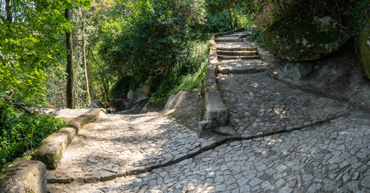September 21, 2022
Embracing Change: Lessons From the Science Fair

By Julie Gregory, Chief Health Liaison for Apollo Health
Back in elementary school, I was introduced to the Scientific Method (steps below). I was taught that this was the basic framework for all scientific research. As a child, I had to use this process for each of our annual school Science Fairs. In fifth grade, I even got third prize by disproving my hypothesis that “Phil” (my philodendron) preferred rock ’n’ roll. Because he was thriving in my bedroom, where he was fairly regularly exposed to rock ’n’ roll, I hypothesized that he would thrive under more constant exposure. Per my experiment, he got two weeks of rock ’n’ roll, then two weeks of classical music, both at the same volume with the same light and water conditions. With more rock ’n’ roll, he began to droop and lose his leaves. When he was exposed to classical music, he began to grow new leaves and thrive.
Scientific Method
● Make an observation.
● Ask a question.
● Make a prediction based on the hypothesis.
● Test the prediction.
● Iterate: use the hypothesis to make new hypotheses or predictions.
Third prize was pretty exciting back in fifth grade, but the even bigger prize was that I learned from the experiment. I moved Phil out of my bedroom and into the living room, where he would be regularly exposed to my mother’s favorite classical music. As a result, Phil lives on today. In fact, he’s kind of a monster — huge, lush, with shiny green leaves. He’s still with my mother, thriving with regular exposure to their favorite music. She claims he’s partial to Beethoven’s “Symphony No.5 in C minor.”
A quick review of published scientific literature reveals that my fifth-grade experiment probably didn’t make an important contribution to science. Apparently, plants do respond to vibrational sound, but scientists are still squabbling over their favorite music. The bigger lesson for me was in learning to use the Scientific Method itself — methodically going through each step to try to find an answer and pivoting when I learned my hypothesis had been disproven.
What if I had skipped a step? What if my hypothesis had been proven wrong (multiple times!), but I refused to learn from the results of my experiment? What if I had dug in my heels and insisted that Phil just needed to hear louder (or softer) rock ’n’ roll? What if I insisted that my hypothesis would have been proven correct if only Phil had been exposed to rock ’n’ roll earlier (or later) in his life? What if my teachers and classmates told me that I couldn’t use sound as a variable? After all, everyone knows that light and water are the only requirements for a plant! What if my classmates had ridiculed me for trying something new? What if my teachers had forbidden me to conduct my experiment? What if they withheld my admission to the science fair? I may have been cheated out of the third prize. Even worse, Phil may have ultimately withered away.
This all may sound pretty silly, but it’s exactly what’s happening with Alzheimer’s research, and real lives are hanging in the balance. For decades, the mainstream scientific community has decided that the amyloid hypothesis must be correct. It’s a seemingly logical theory. We know that beta-amyloid plaques tend to accompany Alzheimer’s disease. Per the theory, if we can get rid of the plaques, then we should be able to reverse the disease process, right? Well, after billions of dollars have been spent on hundreds of failed trials, it looks like it may not be this straightforward. In all fairness, researchers have been able to reduce the amyloid burden, but trial after trial has shown that it does not improve cognition. Complicating everything is the new evidence that some of the foundational work to create that hypothesis may have been falsified.
But, the worst part, in my opinion, is the political (and ultimately financial) nature of which hypotheses will get the funding to be trialed, published, and widely shared. “The Maddening Saga of how an Alzheimer’s ‘Cabal’ Thwarted Progress Toward a Cure for Decades” outlines how the Alzheimer’s research community has suffered from what historians will ultimately use as an iconic example of group think — the practice of thinking or making decisions as a group in a way that discourages innovation or individual responsibility. Sincere and influential scientists believed so wholeheartedly in the amyloid hypothesis that they effectively shut down any competing theories, to the point of influencing not only their colleagues but also government, foundation, and pharmaceutical funding sources to be directed almost exclusively to this one theory. Despite multiple failures, they’ve failed to pivot and have collectively ignored the basic tenets of the Scientific Method, and patients have suffered.
When I first met Dr. Bredesen in 2014, shortly after the publication of his seminal paper, “Reversal of Cognitive Decline: a Novel Therapeutic Program,” I knew he was the real deal. I had spent the prior two years devoted to trying to save my own life. His approach not only worked to reverse my cognitive decline (which instantly gave him enormous credibility), but he also offered an elegant Alzheimer’s hypothesis that has yet to be disproven. Simply put, he suggests that when the brain is supported, it thrives; when it isn’t, it begins to shut down. He’s proven this with hundreds of case studies, a successful clinical trial, with a bigger one underway.
One thing that makes his hypothesis timeless is that it isn’t tied to one strategy or one preconceived treatment option. His hypothesis is more of a framework that explains how the entire neural network operates. In our first conversation, he said, “One thing I can promise is that the protocol will change with new information.” And it has continued to evolve over time and will continue to evolve to best help patients. Dr. Bredesen is constantly learning and advancing the protocol with each patient that he encounters. As a community, we are all learning together.
Dr. Bredesen’s critics have claimed that he isn’t doing science “correctly.” Based on what I learned in fifth grade, it’s pretty clear to me who would have been overlooked (and maybe even disqualified) from the Science Fair.




